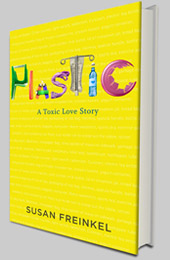When I was working on my book, trying to track the political debate over plastic bags was a major pain. Every time I saw a news story about some town considering a ban, I would log it into a chart I had made; it was hardly a precise or exacting method. Now I have the luxury of simply checking the wonderful website www.plasticbaglaws.org, a compendium of information related to the ongoing battle over bags. I only wish it had existed two years ago.
The site is the brainchild of Jennie Romer, a San Francisco Bay area lawyer. While in law school, she said, she decided to write an article about San Francisco’s landmark decision in 2007 to ban plastic bags. That got her interested in the growing debate over bags, but when she decided to write another article, she discovered that there was little available information about what was happening in other communities, the strategies bag activists were pursuing, or the kinds of tactics the industry was using. Unlike many issues, the push to ban plastic bags has been an entirely local phenomenon, undirected by any kind of national campaign. The upside is the movement is genuinely grassroots; the downside, as Romer discovered, is there’s been no central repository of information for localities to draw on. “I started the website as a research tool for myself,” she told me. “And it just kind of turned into a bigger thing.”
Now she’s tracking legislation in all 50 states as well as litigation in California, where most of the court battles have taken place. She has also compiled studies of plastic bag laws and regulations, life cycle analyses, scientific reports on their environmental impacts and other related information, as well as a host of useful plastic-related links, including one to another bag-tracking site, Plasticbagbanreport. Personally, Romer favors efforts to restrict plastic bags, but she includes reports from both defenders and assailants of single-use plastic bags.
We are in the midst, she says, of a wave of “second generation” bag laws. San Francisco launched the first generation with its flat-out ban on plastic bags, the law that became the model for communities around the country. But now communities are recognizing the shortcomings of that approach: targeting plastic bags alone leaves people free to keep using paper bags — which also have environmental costs, ie. more water and energy to produce – -and does little to break the general single-use habit. This newer generation of bag laws takes aim at both plastic and paper, typically by banning the former and putting a fee on the latter. This week San Francisco joined the wave, by expanding its original bag ban, making it a requirement for all retailers in the city (not just big grocery stores) and adding a ten-cent fee for paper bags. To see what other towns are doing, check out Romer’s site.




Jennie’s website is definitely a plus. She and I have spoken about plastic bag regulations occasionally and plasticbaglaws.org is a great resource.! Jennie attends many of the county public hearings across California, always speaking up to encourage the proposed ban.